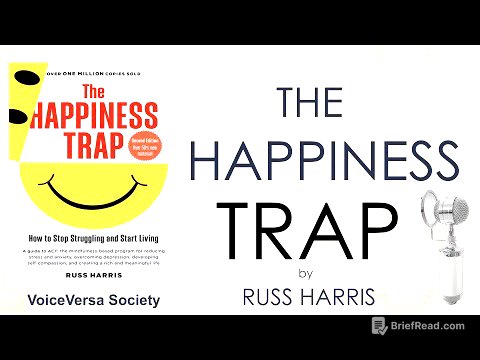TLDR;
This lecture discusses the critical role of monitoring and load management in preventing injuries and optimizing performance in sports. It emphasizes balancing training loads, understanding internal and external factors affecting athletes, and utilizing scientific advancements to improve load management strategies. The lecture also covers the importance of recovery, the dangers of overtraining syndrome, and the use of technology for real-time data tracking and training adjustments. It further addresses the unique requirements of youth and female athletes, the significance of sleep and nutrition, and the collaborative role of coaches and support staff in managing athlete well-being.
- Balancing training loads is crucial for injury prevention and optimal performance.
- Understanding the super compensation curve helps in designing effective training programs.
- Monitoring acute to chronic workload ratio (ACWR) helps in identifying the sweet spot for minimizing injury risk.
- Recovery, sleep, and nutrition play vital roles in load management and injury prevention.
- Technology and data analytics can be used to develop personalized training plans and injury reduction strategies.
Introduction [0:15]
The lecture introduces the importance of load monitoring and management in sports to balance training loads, prevent injuries, and achieve optimal performance. It highlights the need for scientific advancements in load management strategies and outlines the objectives, including understanding the role of monitoring in injury prevention, identifying load assessment methods, exploring tools and technologies, discussing best practices, and evaluating successful load management programs.
Load Management [2:20]
Load management involves systematically manipulating, monitoring, and adjusting training and competition loads to optimize performance, facilitate recovery, and prevent overtraining. It requires considering both external and internal factors that affect athletes individually and collectively. Key concepts include understanding the difference between internal and external training loads, adaptation versus mal adaptation to training responses, and the importance of individualized load prescriptions.
Super Compensation Curve [3:27]
The super compensation curve illustrates the relationship between training load, recovery, and fitness levels. Applying training load decreases fitness, while recovery allows fitness to return to baseline and then surpass it. Repeated cycles of training and recovery lead to improved basal fitness. Insufficient recovery time prevents athletes from reaching the super compensation phase, emphasizing the importance of balancing training and recovery for optimal fitness.
Acute to Chronic Workload Ratio (ACWR) [5:41]
The acute to chronic workload ratio (ACWR) compares workload over the past 7 days (acute) to the workload over the past 28 days (chronic). This ratio helps determine the proper load on an athlete and how to progress the workload. An ACWR between 0.8 and 1.3 is considered the "sweet spot" with the lowest injury risk, while values less than 0.8 or greater than 1.5 indicate increased injury risk. The acute workload represents fatigue, and the chronic workload represents fitness.
Internal and External Load [8:04]
Internal load is monitored through heart rate, blood lactate levels, RPE (rate of perceived exertion) levels, and hormonal markers. External load is monitored through distance covered, sprint count, jump count, accelerations, decelerations, and GPS data. Understanding the interaction between internal and external training loads is crucial for optimal training outcomes.
Importance of Recovery [8:48]
Recovery is vital in load management and injury prevention, as illustrated by the super compensation curve. Types of recovery include passive and active recovery. Sleep is a crucial factor in recovery and performance. Active recovery interventions like hydrotherapy, compression therapy, and massage can be beneficial.
Overtraining Syndrome [9:25]
Overtraining syndrome occurs when an athlete trains without performance enhancement, progressing through phases like functional overreaching, non-functional overreaching, and overtraining syndrome. Early warning signs should be identified to prevent athletes from reaching the overtraining stage. Monitoring sleep, resting heart rate, nutrition, and motivational issues can help detect overreaching early.
Monitoring Workload in Different Sports [10:50]
Workload management varies across sports due to their unique demands. Endurance, power, and team sports require different load management strategies. Case studies in sports like soccer, basketball, track and field, swimming, and cricket provide valuable insights. Variable technology, including GPS monitors, accelerometers, and heart rate monitors, plays a significant role in monitoring athletes in real-time.
Subjective vs Objective Load Monitoring [12:46]
Subjective load monitoring involves self-report measures like RPE and wellness questionnaires, while objective data comes from wearable technology and lab testing. A combined approach is needed for accurate assessment. The reliability and validity of subjective versus objective measures should be considered.
Fatigue Monitoring and Injury Prevention [13:33]
Neuromuscular, metabolic, and central fatigue influence injury risk. Fatigue can be assessed through countermovement jumps, grip strength, and heart rate variability. Load adjustments should be based on these fatigue indicators.
Biomechanical Load Monitoring [14:00]
Motion analysis and movement screening are used for biomechanical load monitoring. Forceplate testing assesses jump mechanics and landing techniques. Running gate analysis evaluates load distribution on different limbs. Wearable biomechanical sensors provide real-time movement tracking.
Neuromuscular Load Assessment [14:37]
Surface electromyography monitors muscle activity for strength evaluation and detection of muscle imbalance. Isokinetic dynamometry and functional movement screenings identify movement deficiencies. These techniques are valuable in rehabilitation and return-to-play assessments.
Training Load and Periodization [15:14]
Periodization involves varying training load and recovery over time. Structured approaches to load progression include linear, undulating, and block periodization models. High-intensity interval training (HIIT) and recovery are used for proper load management. Individualized periodization plans are essential for optimal recovery.
Youth Athletes [16:13]
Youth athletes have unique requirements. Early specialization and high training volumes should be avoided. Late specialization and participation in multiple sports are recommended. Age-appropriate training loads should be followed, considering growth-related injuries.
Female Athletes [17:12]
Hormonal influences affect recovery and injury risk in female athletes. Menstrual cycle tracking should be used to adapt training. Training modifications and injury prevention strategies should be sex-specific.
Sleep and Load Management [17:51]
Low or poor sleep increases injury risk. Sleep deprivation affects cognitive function and motor control. Sleep tracking devices can be used to manage athletes. Strategies to improve sleep hygiene and recovery should be taught.
Nutritional Strategies [18:28]
Macronutrients and micronutrients are crucial for recovery and tissue repair. Hydration is important for maintaining optimal performance. Anti-inflammatory diets can support injury prevention. Nutritional periodization should be incorporated into training programs.
Strength and Conditioning [19:13]
Progressive resistance training reduces injury risk. Sports-specific conditioning programs should be incorporated. Eccentric training improves tissue resilience. Proper load monitoring is essential during resistance training and power development.
Role of Coaches and Support Staff [19:51]
Coaches and support staff play a crucial role in educating athletes on load management and developing individualized training programs. Open communication between coaches, medical staff, and athletes is essential. Sport psychologists can help manage training loads.
Injury Surveillance and Data Analytics [20:22]
A proper injury tracking database is needed. Predictive analytics and machine learning can be used to develop injury prevention programs. Data-driven injury reduction strategies should be studied, considering ethical considerations in data collection and usage.
Return to Play Load Monitoring [20:54]
Progressive overload is important in rehabilitation. Load assessment tools should be used for return-to-play decisions, balancing performance and injury risk. Psychological readiness assessment and confidence-building techniques should be used before return to play.
Challenges [21:27]
Challenges include resistance to change in coaching practices, the cost and accessibility of new monitoring techniques, and a lack of standardization in load monitoring protocols. Strategies to improve compliance and effectiveness are needed.
Future Trends [21:58]
Future trends include artificial intelligence-driven injury prediction models, personalized training plans, virtual and augmented reality in load assessment, and genetic profiling for personalized load management. Ethical concerns and the future of sports technology must be considered.
Conclusion [22:27]
The lecture concludes by emphasizing the importance of monitoring and load management, the need for a multidisciplinary approach, and the continuous evolution of best practices in injury prevention. Optimizing load management for athlete performance and injury reduction is an ongoing, collaborative effort.









